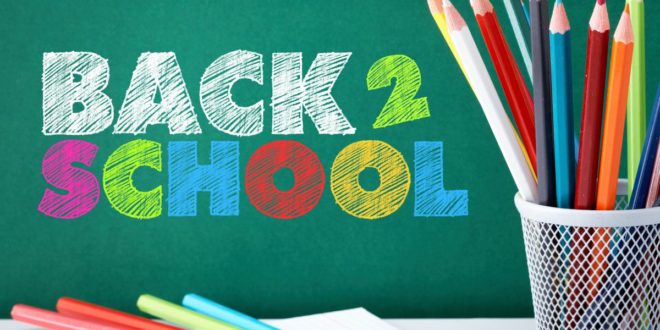STUDENTS, families, teachers and staff should plan for a near-normal return to school in September.
The Province is providing $43.6 million to support ongoing health and safety measures, First Nations and Métis students, mental health services, rapid response teams and to address learning impacts to students.
“B.C. is one of the few jurisdictions that has kept schools open all year despite the pandemic, thanks to the enormous collective efforts of everyone in the K-12 education system, and I extend my heartfelt thanks to them all,” said Jennifer Whiteside, Minister of Education. “We will continue to work with the experts in the provincial health office and our provincial K-12 education steering committee throughout the summer to finalize plans and guidelines to ensure students and staff are safe for the next school year.”
Throughout the 2020-21 school year, educators, staff and administrators have worked tirelessly to adapt to the challenges of the pandemic and support the health, well-being and learning of students, while parents and families have been flexible and adaptable to meet the needs of their children.
As part of the return to school in September 2021, students can expect to learn in classrooms full time. Similar to any other school year, online learning programs will remain available for students.
Of the $43.6 million, there are $25.6 million in new one-time, pandemic-specific funding to support necessary cleaning and disinfecting, hand hygiene for students and staff, improve ventilation and restock supplies of personal protection equipment (PPE). This funding will also strengthen the commitments to First Nations and Métis students and provide more mental health supports for students and staff.
Plus, money will be available to address learning impacts from the pandemic. Earlier this year, the ministry advised school districts that $5.9 million was available to be allocated to address learning impacts. Today, an additional $12.1 million are provided from the remaining 2020-21 school year operating grant.
Breakdown of the $25.6 million in new one-time funding:
* $14.4 million for health and safety, cleaning and supplies
* $5 million to support First Nations students and build capacity within First Nations Education Steering Committee and Métis Nation BC
* $5 million for mental health services
* $1.2 million for independent schools
Based on guidance from the Office of the Provincial Health Officer, students will no longer be grouped into cohorts this September. Research has shown schools were not significant sources of COVID-19 transmission, and with high vaccination rates throughout B.C., these measures will no longer be necessary. This will allow normal timetabling. Should the current encouraging progress continue, it is anticipated the restrictions on gatherings, extracurricular activities and sports will no longer be required when the new school year begins.
Guidance on wearing masks in school settings will be confirmed later this summer and in alignment with broader provincial direction for the fall and winter. Students will continue to be required to complete daily health checks, stay home when feeling sick and practise diligent hand hygiene. Public health teams and school health officers will continue to closely monitor cases of COVID-19 in schools and the community, and will continue to provide support and guidance as schools return in the fall.
“This was a very different school year for everyone, and school communities have done an exemplary job adapting to the challenges we all faced,” said Dr. Bonnie Henry, B.C.’s provincial health officer. “Now, as we transition to a new phase and continue with immunizations throughout the province, students and educators can look forward to returning to a school environment that will be much closer to what they are accustomed to.”
The Province expects all eligible British Columbians will have been offered both vaccination doses by September, pending vaccine availability. More than 50% of kids aged 12 to 17 years old in B.C. have received their first vaccine dose.
Rapid response teams, which have been in place since February in each of the five health authority regions, will continue in the fall. The teams will focus on supporting recovery efforts in schools through a focus on academic, socio-emotional and mental health. They will also continue to provide streamlined communications at the local level to share information, support consistent practice of, and update where necessary, the K-12 health and safety guidelines.
“Boards of education across the province have worked hard in every community over the past year to ensure students were able to spend as much time as possible in school. We are thankful that the Province chose to prioritize the well-being of our children and youth by keeping B.C. schools open for in-person learning,” said Stephanie Higginson, president, BC School Trustees Association. “The funding announced today will help districts make sure our learners can continue to access the educational programs and services families and communities expect from our public school system. We look forward to starting a new school year in September with renewed hope and optimism.”
The provincial K-12 education steering committee – made up of educators, parents, support workers, school leaders, trustees, representatives from the First Nations Education Steering Committee (FNESC) and Métis Nation BC, and public health experts – will continue to work with the ministry and the BC Centre for Disease Control (BCCDC) in the summer to review and finalize school safety plans for the fall. It is expected the current guidelines used in schools over the past year will be replaced by updated guidelines in August 2021.
“Today’s announcement is an important step in recognizing the fundamental role of First Nations in supporting the educational success of First Nations students,” said Tyrone McNeil, president, FNESC. “This funding will assist First Nations in addressing the impacts of the pandemic experienced by First Nations learners. We appreciate the ministry’s commitment to working with FNESC and B.C. First Nations as we recover from these challenging circumstances.”
Andrea Sinclair, president, BC Confederation of Parent Advisory Councils, said: “This school year has been challenging for us all. We relied on evidence and health and safety plans and together we kept schools open. We have represented parents and families on the K-12 steering and restart committees and influenced decisions and policies. I am impressed at how hard parents, educators, support staff and health-care professionals worked as teams to ensure schools remained open and safe. Our education partners have shown tremendous knowledge and dedication to overcoming adversity, and I am confident that our school system can overcome any future challenges while meeting the educational needs of our children.”
Quick Facts:
* There are approximately 1,900 K-12 schools in B.C. To date, 40 schools have closed temporarily for a short period of time during this school year, which has resulted in schools being open and safe 99.998% of total school days.
* Two studies conducted by health authorities during the 2020-21 school year found:
* in Vancouver Coastal Health, 92% of school-associated cases of COVID-19 were acquired from outside of the school environment; and
* in Fraser Health, 87% of school-associated cases were acquired through community/household transmission, not from the school setting.
Learn More:
B.C. COVID-19 Safe Schools website:
https://www2.gov.bc.ca/gov/content/education-training/k-12/covid-19-safe-schools
 Desi Today Magazine
Desi Today Magazine




